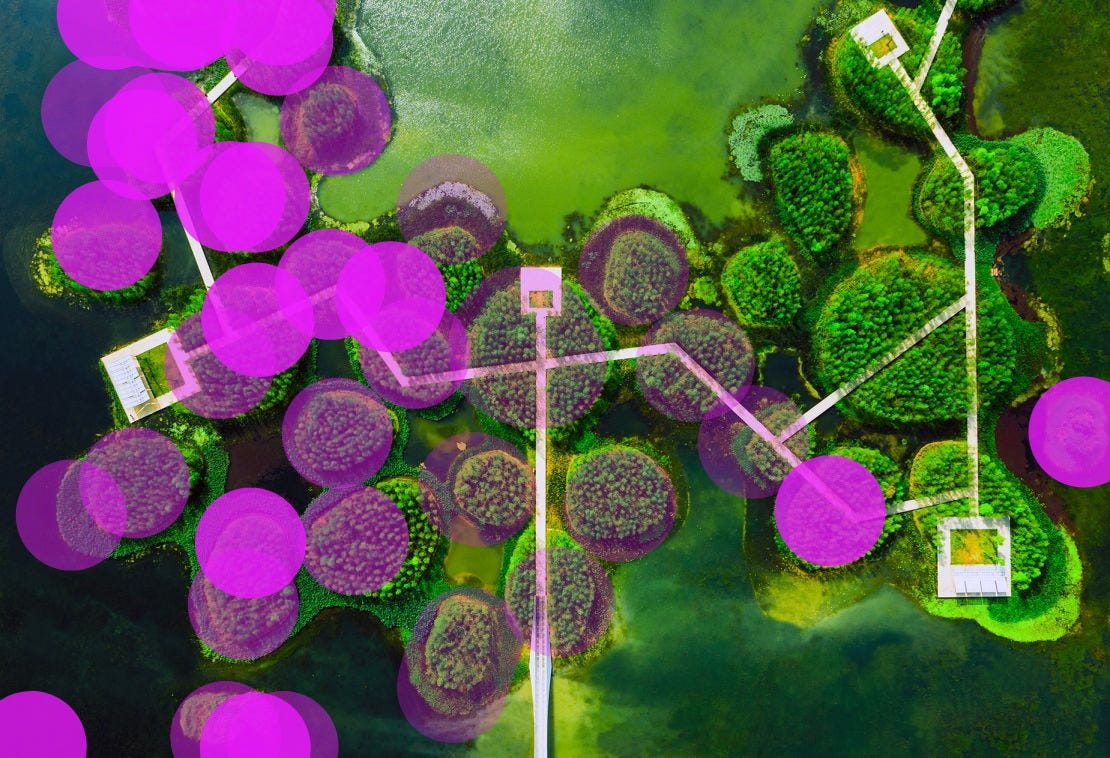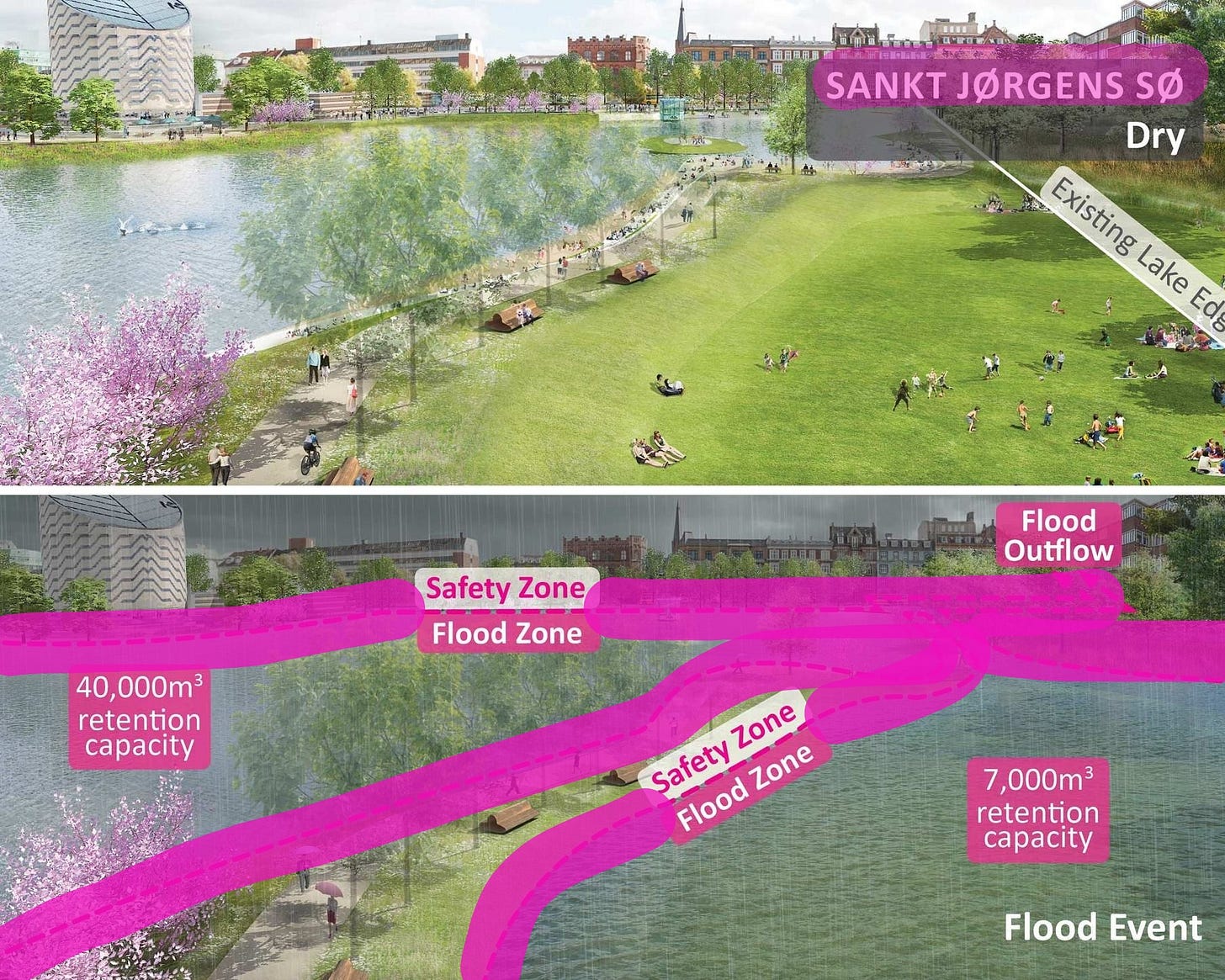Scaling Climate Action: Local Innovations, Global Challenges
Bridging Local Action and Systemic Change

Over the years I have seen countless urban gardens, rain catchment basins, and resilient parklets. The impact is clear: rain gardens lining the streets, trees planted to absorb stormwater, and permeable pavement to reduce flooding. Its a beautiful thing and in a way that is functional. Here we have an example of the kind of climate action we need. Woven into the fabric of the city, it provides endless benefits for neighbors and tackles both mitigation (cutting emissions) and adaptation (preparing for climate impacts).
These dual-purpose projects prove that we don’t have to choose between addressing the root causes of climate change and responding to the crises already at our doorstep—we can do both. And we need to. But the real question is: how do we scale these efforts from neighborhood-level innovations to system-wide transformations?
The Stakes: A World in Transition
Sea level rise is a good example. Coastal cities are in a tough spot. We’ve built major economic hubs right on the water, and now, with rising tides, those investments are at risk.
In places like the Netherlands, the “Room for the River” program has redesigned waterways to better absorb flooding while restoring natural ecosystems. It’s an elegant solution, but scaling something like this requires huge buy-in, long-term planning, and serious financial backing. And let’s be real—many cities don’t have the resources or political will to make it happen.
At the same time, we need to rapidly decarbonize our economies, which means shifting away from fossil fuels, overhauling urban infrastructure, and investing in green energy. But as researchers like Harriet Bulkeley and colleagues point out, cities are often stuck in fragmented governance structures that make systemic change difficult. So, what’s working? What can we learn from places that are making it happen?
Local Innovations Bridging Mitigation and Adaptation
Across the world, cities and communities are finding creative ways to tackle climate challenges head-on. Some of my favorite examples include:
The Great Green Wall (Africa): Imagine an 8,000 km long belt of trees stretching across the continent, stopping desertification, supporting biodiversity, and pulling carbon out of the atmosphere. It’s ambitious, and while progress has been uneven, it’s a vision that combines ecological restoration with climate resilience.

Sponge Cities (China): Instead of fighting water, these cities are designed to absorb it—using green roofs, wetlands, and permeable streets to soak up rain, reduce flooding, and cool urban areas. Cities like Wuhan and Shenzhen are leading the way, showing how nature-based solutions can be integrated into dense urban areas.
Copenhagen’s Cloudburst Management Plan (Denmark): After major flooding events, Copenhagen invested in a system of parks, streets, and public spaces designed to handle extreme rain, turning climate risk into an opportunity for better urban design.
These examples show that dual-purpose climate action isn’t just possible—it’s already happening. But local projects can only go so far. The real challenge is scaling these ideas into national and global strategies.
Scaling Up: The Challenge of Systemic Adaptation
Making climate solutions bigger isn’t just about throwing money at the problem—it’s about rethinking systems. Some of the biggest shifts we need include:
Managed Retreat and Land-Use Planning: Moving communities out of high-risk areas is a hard sell, but in places like Louisiana and Indonesia, relocation efforts are already underway. How do we do this equitably, without displacing people without support?
Infrastructure Overhauls: We need to rebuild cities for a changing climate—whether that means seawalls, floodable parks, or net-zero buildings. But these projects require long-term vision and serious investment.
Climate Migration Policies: People are already being displaced by climate change, yet most national policies haven’t caught up. We need frameworks that support communities in transition, rather than treating migration as a crisis.
As Mark Pelling and others argue, true “transformative adaptation” isn’t just about tweaking systems—it’s about rethinking power structures, financial flows, and governance itself. The question is, how do we actually make this happen?

From Local Action to Global Systems
For all the innovations happening at the local level, we need better ways to scale up to make a greater impact. That means:
Aligning Governance Across Scales: Cities, states, and national governments need to actually talk to each other and coordinate climate plans. Otherwise, we’ll keep reinventing the wheel.
Innovative Climate Finance: We need to get serious about funding—through green bonds, resilience funds, and public-private partnerships that put real money into transformative projects.
Community-Driven Policy Integration: The best solutions come from the ground up. How do we ensure that local efforts (like the rain gardens in my San Francisco neighborhood) are embedded into national and global strategies?
Reimagining the Future of Climate Planning
I started this piece by talking about a small-scale urban green project in my city. And while I love seeing these efforts pop up in different places, I keep coming back to the bigger picture: What’s next? How do we take these local wins and turn them into global momentum?
So here’s my invitation to you: If you’re working in urban planning, policy, or climate adaptation, let’s connect. Who’s doing this well? What strategies are actually moving the needle? How do we go beyond buzzwords and start implementing the systemic changes we need?
Because at the end of the day, climate action isn’t just about protecting what we have—it’s about building something better.
Practical Tools for Scaling Climate Adaptation
Now that we've explored how local climate solutions bridge mitigation and adaptation, I'll soon be offering practical resources to help you evaluate impact and scale your efforts. In the coming weeks, I'll share a comprehensive toolkit with assessment frameworks, decision-making guides, and strategic planning resources designed specifically for local climate initiatives seeking broader impact. Stay tuned!
Until next time.



